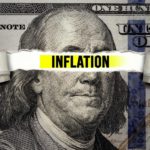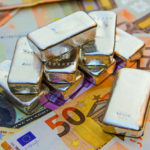Gold Demand Surges From India To Hong Kong Despite Price Rally Linked To Israel-Gaza War

(November 12, 2023 -Biman Mukherji)
- Ahead of the peak festival and wedding season, prices have soared due to the Israel-Gaza war, near an all-time high, but many are still buying gold
- While most of the demand is for jewelry, a growing number of investors are getting in on the precious metal action, analysts say
Asia’s legendary appetite for gold is intact in the run-up to peak festival and wedding season, despite soaring prices due to the Israel-Gaza war.
Long considered a store of value, gold prices hit a five-month high on October 27 of above US$2,000 an ounce following the conflict in the Middle East, close to an all-time high. Prices have since dipped to US$1,950 as the safe haven rally has weakened.
“Buying sentiment is high as prices have come down a little. People are not sure when prices may rise again because of the war,” said Bachhraj Bamalwa, owner of the Kolkata-based Nemichand Bamalwa and Sons, a large gold and diamond retailer.
“Many people have weddings between November and January. For them, buying gold is compulsory,” he added. Gold is given to brides as a form of lifetime savings, as well as considered as a token of good fortune.
The Indian festival of Diwali, being celebrated this weekend, is also spurring purchases because it is considered auspicious. High prices are, however, prompting many consumers to settle for smaller quantities, Bamalwa said.
Large jewelers have already stocked up in the run-up to the festival and are waiting to see whether the Israel-Gaza war escalates in the Middle East, traders said.
“If the situation stabilizes, then there could be a dip of around US$100 per ounce in the next few weeks. But by January to February, we think prices could rise to as high as US$2,200 an ounce,” said Ganesh Agarwal, director of Shiv Sahai and Sons, one of India’s largest bullion dealers.
Gold has room to rally further as Western nations are expected to pump out more cash and ease bank rates next year after a hiking cycle to stave off a hard economic landing amid a worsening global outlook due to the Russia-Ukraine and Israel-Gaza wars, he said.
A senior Indian industry executive said buying sentiment in India is intact during the festival and wedding season, the period accounting for most purchases.
India and China are the world’s biggest gold consumers – the first place alternates between them – with their combined share accounting for over half the global market.
“It may not be runaway demand, but there will be an uptick,” said P.R. Somasundaram, Mumbai-based regional CEO for the World Gold Council. “If prices drop, then people will buy for the wedding season. The latent demand is very strong.”
Most of India’s gold demand is for jewelry, not purely for investments. However, a growing number of investors have been allocating a portion of their portfolio to gold, he said.
Spreading the bets
Gold purchases in other Asian hubs are also strong.
“We have seen an increase in gold purchases in Hong Kong recently, which can be partially attributed to the coming Spring Festival, which is traditionally a peak season for gold jewellery purchases,” said a Chow Tai Fook Jewellery Group spokesperson.
“Customers are buying products, like the Year of Rabbit jewellery and gold coins, to send blessings and good wishes to their loved ones.”
The Lunar New Year, which falls on February 10 next year, marks the beginning of the Spring Festival holiday, the biggest holiday in China.
The easing of Covid-19 restrictions and an increase in weddings has released pent-up demand for bridal jewellery, the Chow Tai Fook spokesman said.
Hong Kong sales are also seeing strong uptake from mainland China and Taiwan, said a precious metals dealer in the city.
“Our sales in October were more than double of September and nearly double of August,” said Padraig Seif, founding partner of Hong Kong-based Precious Metals Asia.
Many of the purchases are by traders who want to take advantage of lower prices in Hong Kong compared to the mainland, where there is a shortage of gold.
Premiums on the precious metal in Shanghai – a mark-up paid to secure speedy deliveries and cover overhead costs – are around 10,000 yuan (US$1,370) compared to around US$90 to US$130 in Hong Kong, Seif said.
Buyers have also been flocking in from Taiwan, which could be linked to the geopolitical tensions between China and the United States over the self-ruled island, he said.
“Our long-standing customers have come back online since early this year and have been driving sales to pre-pandemic levels,” Seif added.
Gold demand across other regions is mixed, said a senior London-based executive.
Physical demand in Europe has, after four strong years, shown a sharp decline amid higher interest rates on savings, moderation in inflation and euro-denominated prices, said Ross Norman, CEO at Metals Daily.
“The fighting in Israel has spurred good demand across both the Middle East and Turkey, with investors fearing possible contagion” to the region, he said, adding that the impact of the conflict may not last.
Norman was “a little sceptical” on whether event-driven gold rallies like the Israel-Gaza war “are sustainable in the long run, assuming no escalation, and already we are starting to see some good profit-taking despite an intensification in fighting”.
Over the next few months, the outlook for gold is likely to be derived from moves in the US dollar and investment flows, he added.






